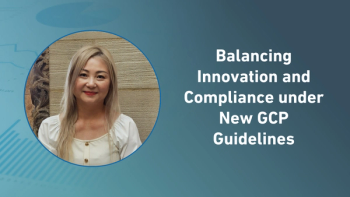
- Applied Clinical Trials-05-01-2010
- Volume 0
- Issue 0
Modern Communications
Whether companies participate or idly observe community activity, this is a tactic worth considering.
The marketing environment today is difficult, whether your goal is to raise awareness for trials, increase direct to consumer sales or build a brand for new products. When faced with the challenge of outward communication for those messages, there are a lot of options.
There are thousands of combinations that could potentially be the right mix of creativity and tactical execution. The best place to start is to develop a sound strategy based on the desired results, creating a roadmap of sorts that provides the foundation by which each potential unique combination must be judged.
There have been numerous articles written, blogs updated, whitepapers distributed, and tweets sent on the need to include social media in anything and everything you do communications-wise. It is also understood that in general, life sciences as an industry can be a slow moving machine, typically behind the adoption curve of anything new in terms of communications. However, in some cases, that slowness can be translated to patience and better understanding.
Social spaces
When you assess where and how the pharma industry has entered into the social space, there are two main points: public relations and patient communities.
In the first, pharma companies set up social media outlets like Twitter and Facebook as a channel for redistribution of press articles. While larger brands find this an inexpensive way to push more information out to more people, it is counter to the basic premise of connectivity that social media stands for: creating community. There must be two things in place for this community to exist and for any social interaction to become fully engaged: trust and purpose.
The second area where pharmaceutical companies are participating in the social space is patient communities. These are sites and blogs established to bring together people with similar problems or illnesses and allow them to openly discuss issues, defeats, and victories. A place where, many times, the very essence of an illness will be exposed by the conversations in the community, thus providing a better understanding of the patients pharma companies want to reach. Whether pharmaceutical companies actively participate or idly observe community activity, this is a tactic worth considering adding to the journey.
Staying connected
Internet use is still on the rise and most commonly among men and women ages 35 to 54. According to Google Ad Planner data, men and women ages 35 to 44 are the heaviest users of 11 of the top 19 social media sites, with the 45 to 54 age group close behind. Individuals that work in our industry tend to follow the same practices.
Recently, in a survey of over 3000 pharmaceutical R&D professionals, 80% of respondents fell in these same age ranges, with 93% indicating use of social media. Among the respondents, Facebook and LinkedIn ranked highest in terms of social media site usage, coming in at 88% and 80% respectively. Ninety-six percent of respondents indicated their primary reason for actively participating in social media was keeping up with friends and family, with "networking" being the next most common activity at 70%.
The undercurrent to all of this is connectivity. While not every social media tactic is applicable in every strategy, it is a new and powerful tool that brings us closer than ever to our patients and one that should be considered with each communications strategy.
Chris LayfieldDirector of Marketing Praxis
Articles in this issue
over 15 years ago
Applied Clinical Trials Digital Edition - May 2010over 15 years ago
Keeping Ahead of the Technology Curveover 15 years ago
Research Integrity Gets Boostover 15 years ago
EDC & EHR Integrationover 15 years ago
Me-Too's Struggleover 15 years ago
Clinical Trials for Kidsover 15 years ago
act supplement coverover 15 years ago
Health Reform Supports Biomedical R&Dover 15 years ago
A Patient Universeover 15 years ago
Conversations With Study VolunteersNewsletter
Stay current in clinical research with Applied Clinical Trials, providing expert insights, regulatory updates, and practical strategies for successful clinical trial design and execution.




